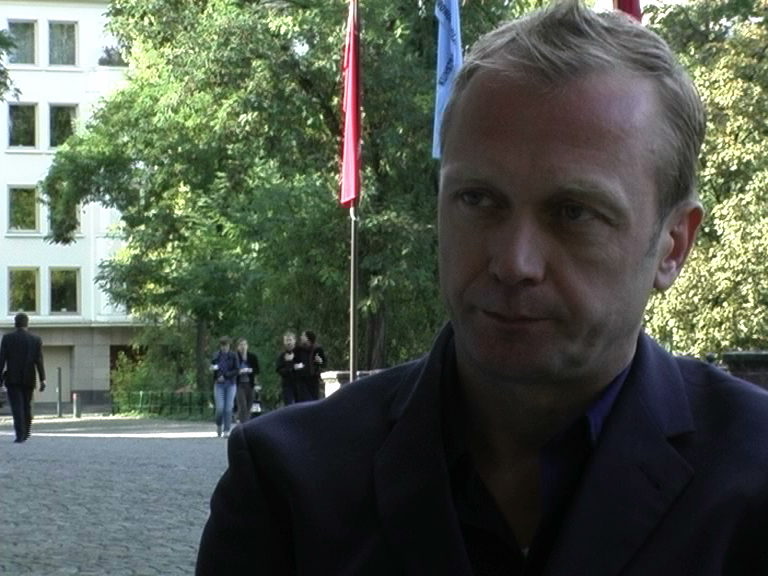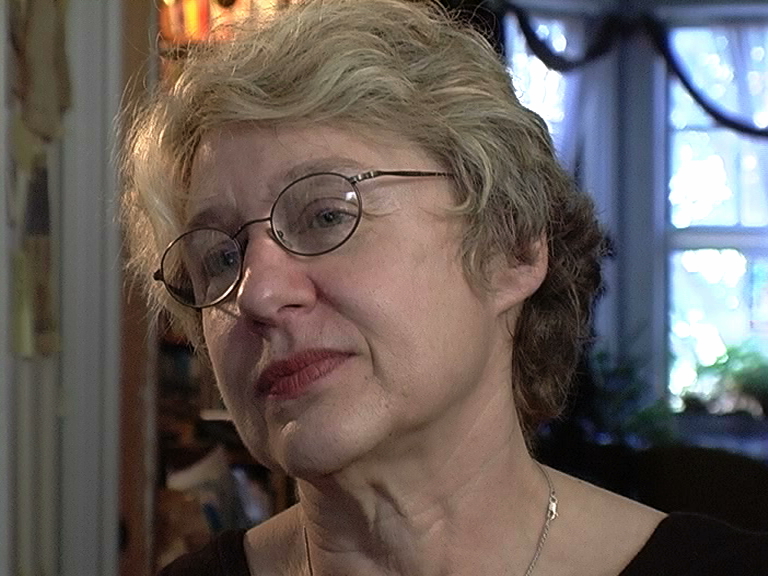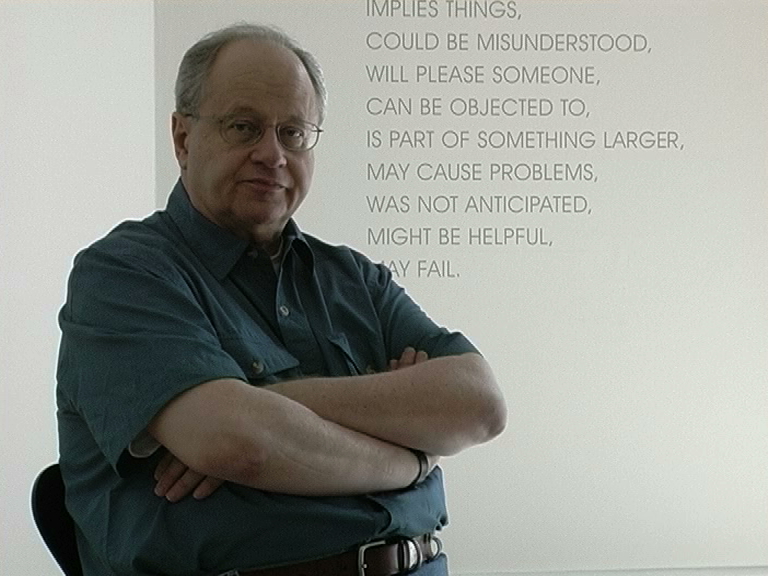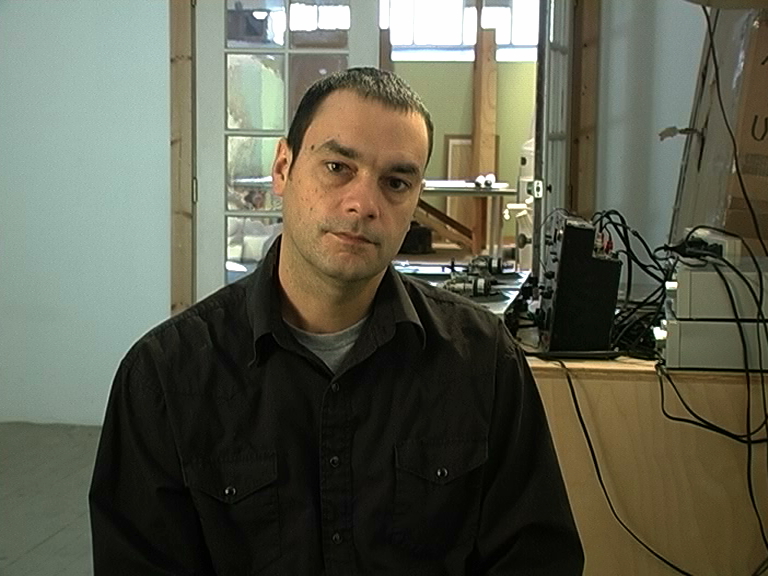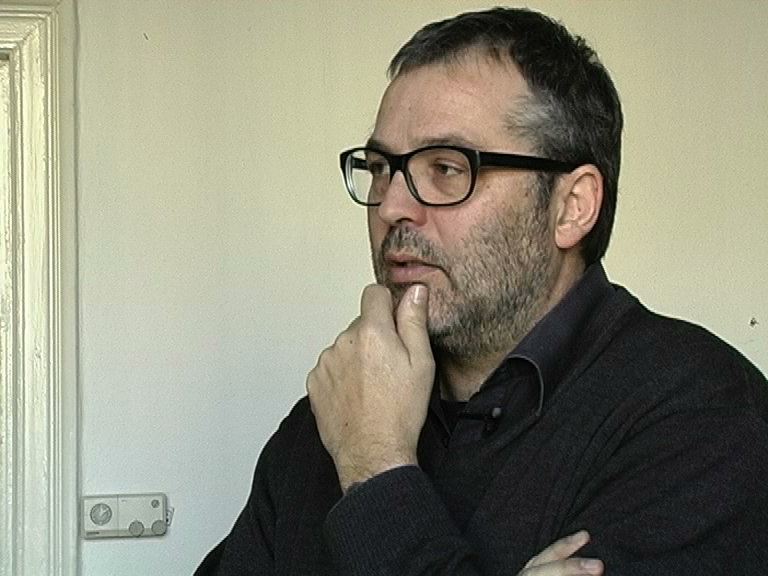G.K.: I met Luis Camnitzer in 1989 in Havana at the Biennial. And then I met him a couple of times later, also. And then they invited me to participate in this project. I thought about it and I had to say – I think it was‚ 94 or‚ 95? I‘ve forgotten the exact date – and I felt that one could, e.g. if one was already doing work which could be at the border line, there was some photography-based work of that kind. But then I discussed it with him, did he want it art-historically precise the term, or was he now expanding that term? And he felt he wanted it, but he wanted to call it Global Conceptualism, but he did want to maintain the distinction between installation art and conceptual art. And I thought it was a very valid thing to do. I thought that in India what had happened was installation, it had a conceptual aspect, but it was not conceptualism in the sense in which it developed in Europe and in the USA. And then he said, Jane Farber said, „all right, if you don’t want to curate a section then you write a text“, and it seemed that I would be basing it on too few artists and I suggested that you cover the Asian region. And in fact then he asked (?) to cover the Asian region which is what I suggested. At that time Indonesia had more conceptual art than India had, as a matter of fact. It just happened to be the timing of the thing. Now, I would say, even now, Stefan, what I would say, is that if you are being very strict about the term, we do not have conceptualism in Indian art, but we do have artists who work on that interface of installation and the conceptual, of photo-based art and the conceptual, of text-based and the conceptual. And I think now the term has also opened up. The whole point is that it is a term of the 70s which has taken this much time to open up, and now the claim that non-Western artists can make on that term is very valid. It was a very strongly Euro-American enclave or position, and I think that now precisely by the interventions by non-Western artists across the border from Latin America to Asia up to China the term has to be modified; all art historical terms are subject to modification. I think that it is subject to modification now to make the term work in a kind of interface with other options; or then the language. For example, I think Minimalism has been re-worked enormously in other cultures. So the language of Minimalism is as if it were filled up with concepts, ideas and content, which was not part of the original Minimalism. So, Montiun Bunma from Thailand is an artist who fills up the language, who annotates the language of Minimalism with a content completely at variance with it, or at least sufficiently at variance with it for us to have reckon that a third category has arisen. I think that’s where one would position Indian artists, that they have changed through their practice some aspects of the Minimal and Conceptual and making it work for their own selves as language, as Expressionism or Surrealism or whatever had worked earlier. People bend it to their purposes; Surrealism has been bent again and again to different purposes. I would say that’s where Indian artists might be positioned, not very strictly within the Conceptual art frame, but in some sort of bent or transformed…
S.R.: It is interesting how you localize different positions – is it still appropriate to think in national lineages – or is there something else, like epistemological communication or something like that, going through historical processes of transformation or something like that?
G.K.: Yes, I think that I was doing a shorthand when I said Indonesia; I could just as easily have said artists in other regions other than India and other than the West had done it in certain ways. So I would say that it happened that in the70s in Indonesia there was a movement which questioned the traditional ways of making art – traditional in the sense of painting and sculpture –, that it happened sooner there than in some other place. So when one is just simply saying what is the spread, what is the field, then one is using a country as a location. Now, I think that the country effect is not totally redundant. One of the reasons Indian artists have taken longer to move into areas of installation – photo-based, video-based installation which bordered on the conceptual – is because the stakes in modernity and in modernism were much higher than in Southeast Asia. The commitment to the agenda of modernity is a very long process in India, in terms of politics, in terms of literature, in terms of any other ideological formations and the arts. It is at least from the middle of the 19th century modernity has a very long run. And it has a certain kind of promise, even a utopian promise within in it, which artists are very reluctant to give up in order to enter what is designated as the post-modern phase where you, at one level, you allow yourself a much greater freedom in terms of critiquing your own historical moment. But at another level, of course, you do not have a convergent aesthetic or a convergent ideology which can then produce its utopias within a paradigm that is already familiar. So I think that shift took longer here than in some of the other locations, either in Latin America or in Southeast Asia. So I was using first of all the country location from that point of view.
S.R.: You were one of the founding partners of the journal of „Arts and Ideas“. How did you find this title? Was it in relation to „idea art“?
G.K.: No, it was not from „idea art“. Therefore it doesn’t have that art historical history. It had a very much more direct relationship to the fact that the group that came together was a combination of people who were academics, who were working within in the intellectual field, and those artists were interested in an intellectual annotation of their works or believed in a critical query or a critical practice of some kind in order to inform their creativity in different ways than the notion of the spontaneous and the subjective artist. So it had to do with a particular kind of convergence of people. Arts and ideas also in this case referred to the coming-together of creative and intellectual practice of a certain intellectual persuasion; these were almost all of them left-inclined people, whether they were academics or artists. So it was within the rubric of an ideologically informed investigation of the arts and the intellectual investigation of art production and intellectual activity – in relationship to each other and both in relationship to an ideological field, which was informed by Marxism. So here there was a very clear kind of paradigm. Now the journal didn’t stick to that in any very programmatic at all. That was its genesis, and as the years went by it questioned its own earlier premise. It opened up the issues to people who would not be necessarily a priori part of the same ideological formation. Because we also found of course that investigation into the arts and into ideas has its own sort of logic as well. So it became a larger forum, a broader forum.
S.R.: When did it start?
G.K.: The first issue came out in October‚ 1982.
S.R.: You were elected to term…(?)
G.K.: I’m one of the only persons in India, in the Indian art scene who is willing to or interested in using the word avant-garde. There could a few artist who would be with me; there is no other critic who uses it. This is completely voluntarist on my part, I’m doing it as sheer voluntarism, and it’s strategic rather than always substantive, because I know that I don’t have a substantive position to uphold. Because if no artist wishes to use this term and no critic wishes to use this term, then obviously there is a mindset here; the avant-garde has as much to do with a mindset as to the actual production or the outcome of that production. So, what is the reason of my voluntarism in this case? I feel that we have for very long, all through our development, all through the unfolding of art production in the 20th century in India substituted certain terms for others. For example when one said, this is modern art, it often meant realist art; it means that we conflated at an earlier stage in the 20th century , realism and modernism. It is not a completely spurious relationship, we know that from Raymond Williams, we know that from Lukács, there is a debate about it with Brecht, so there is a long history of what that relationship is. But to actually to conflate and to substitute is two different things, and there has been that. So you had traditional art or classical art and you had modern art which was realist art or quasi-realist art. There has been a different usage of categories. So when artist were, say ideologically with the Left, they were almost always called progressive artists. When the artists aligned themselves to a social movement, were social activists, or were left-inclined or were with the Communist Party of India, they always were referred to as progressive artists – from Realism to the progressive artists. This again is within the rubric of left thinking. We again bypass the idea of the avant-garde; where the front forces of Russian, Soviet art would have been called avant-garde, here they would be called progressive in the way that it happened in the 30s in the USA, part of the socialist world that regarded its vanguard as progressives rather than as avant-garde; the word avant-garde was excised out of the vocabulary. So there has been in the Indian Communist movement definitely would not have accepted the term avant-garde, it would have accepted the term Realism and progressive art. So we had a sort of shifting of categories and a certain preference for certain categories because of the ideological history behind the development of modernism. What that has done is that is has… – when the word “progressive“ became impossible to use because it seemed not to just simply convey what one meant, and the word „modernist“ seemed too much inscribed within Western liberal thought and western capitalism, and nobody wanted to say, I’m a modernist in the same way that an American New York artist is a modernist. There has been a degree of vacuum about the terminology appropriate for the purpose, and so none of those, what one would in actual fact consider “forward“ positions has been named. Now most artists in India would say there is nothing like a forward position or a middle position or an arrière-garde position. (…) I have been part of that debate myself and I felt that it’s a military term, after all, avant-garde or vanguard, and do we want to use it all?
S.R.: Yes. I would like to say something about…(?)
G.K.: It’s used by a writer I admire very much, which is Peter Wollen, and who was part of the Global Conceptualism project. And in a way there is a friend of mine who is a film-theorist, which is Paul Willerman, who uses it for cinemas from outside the western Euro-American field or Euro-American field or paradigm, and he includes within it certain kind of film-makers from India and elsewhere. So I have a trajectory why I use the term of avant-garde; it is precisely to do with breaking ground through critical intervention. And in that case the avant-garde is neither the Greenbergian modernist vanguard nor is it the Soviet which I love and admire, but it cannot be, it’s not part of a revolution. So it would be false to imply that use of the word today, anywhere, leave alone in India. Because it’s not a correct use of the term. But it is correct if you give it a very precise definition which is critical intervention. And then it can be located, Stefan, in different parts of the world and periodized differently. And I have argued this again and again in every essay of my book that we periodize it differently, we designate it differently; it’s critical intervention. Which creates a disjuncture from what was before and to what is considered to be contemporary as a positioning, and creates a historical rupture by which new art forms or new contents arise. Now this doesn’t have to have the kind of valorizing aspect. It doesn’t have to be valorized like the avant-garde is valorized but it can still have a function of privileging disjucture.
G.K.: You see there the idea of the vanguard or the foregrounding of the body would come out if I can make a conjecture. Or if I were to categorize it it would come out of feminist practice, that particular butting together of two ideas, because, by and large, the use of the avant-garde. The implications of avant-garde have not so much to do with the body or with subjectivity but with historical and social phenomenon, whether it was the Soviet avant-garde or later on its revival in the Minimalist during the 60s, broadly in the 60s. I think in the 70s, with all the intercutting that took place, the cross referencing that took place between Minimalism, Conceptual art and Installation was probably best theorized within feminist terms. So there they re-inscribed the body into the possibilities of treating this as avant-garde, whereas the body in some way would have been excised, Conceptual art would have taken it out of its main concerns, the feminists bring it back. I’m making a very abbreviated comment on the art historical phenomenon. In that sense, I think, the return of the body would be the return or the use of or the foregrounding of the body, would be to do with the body as both corporeal as well as subjectivity. And the two together making the vanguard positions take into their stride the personal and the subjective worlds as against only the social and political agendas. If we enter it from that point, we might have some confluence or some kind of valid juxtaposition of the two terms.
S.R.: Do you want to say something more about this relations?
G.K.: You’ll take little parts out of this to string them together. I think more or less… But I wouldn’t privilege the body over all else. When I say „return of the body“ it’s not to privilege it above something else. I continue to be interested in works that are not body-based, as it were. I think that privileging of the body over all else would mean that we privilege a certain form of subjectivity and therefore a certain kind of language. I’m really interested in works that deal with, that drain the corporeal and the subjective in order to deal only with ideas. These may not be so much present in India but they are interspersed with works, which have a great deal to do with body and expression and subjectivity and fullness. I’m equally interested in works that actually evacuate and deplete that fullness, because they want to deal more directly with ideas. It’s not very well said, Stefan, that one.


























